To reduce the exposure, all nanomaterial containing waste has to be double packaged, i.e. sealed in a zip lock bag or a thermally sealed plastic bag.
It is strongly recommended to generate liquid waste by suspension of the nanomaterial in a solvent in order to avoid dispersion. The nanomaterial suspension is collected in a bottle for toxic chemical waste, which is then double packed.
- All nanomaterial containing waste has to be double packaged.
- Mixing incompatible chemicals must be avoided.
- Sharp or pointed objects (pipette tips, needles etc.) are collected in a rigid container.
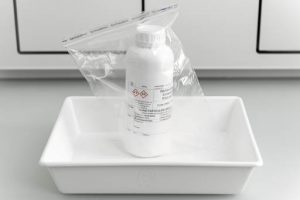 |
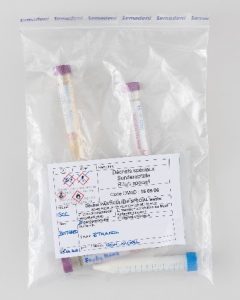 |
| Double packaging of liquid waste containers | |
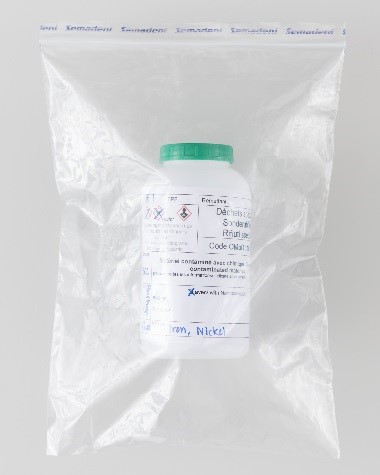 |
||
|
|
Collection of nanomaterial contaminated material |
|
Contaminated material must be confined as quickly as possible to reduce the inhalation risk. Small objects, such as gloves and paper tissue, are put into sealable plastic bags, which are then thrown in the grey bags for toxic chemical waste or in a closed container. Note that the grey bags must be kept in a closed waste container with a lid.
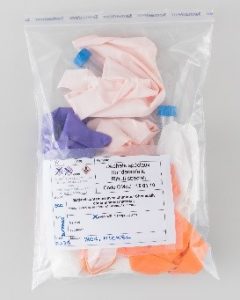 |
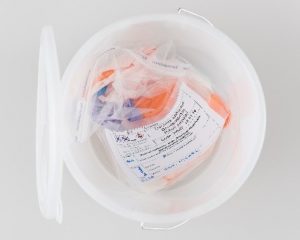 |
| Collection of nanomaterial contaminated material | |
Larger objects, such as lab coats, or larger amounts of small objects that are generated during the day can be thrown directly in a grey bag for toxic waste. The bag is then closed at the end of the day, and is double packed. To reduce the exposure time and the risk of inhalation of nanomaterials from the waste container, the bag should only be closed when it is full or at the end of the daily activity involving nanomaterials.
The double packed waste is then brought to the collection point labelled with information on the content, the chemical or biological hazards, the OMoD code 160506, the name of the produces and the date. It is important to specify on the label that the waste contains nanomaterials.